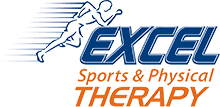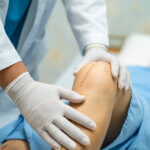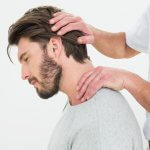Back pain comes in all shapes and sizes. It may be chronic, acute or sudden. Lower back pain is very common with age and can limit your daily activities. Physical therapy can help with many different types of back pain. The first step is determining the cause of your pain.
The Relationship Between Back Pain and Sciatica
Sciatica is often caused by a herniated disk in the lower back. The vertebrae are the bones that make up the spine. Round disks of connective tissues separate and cushion the vertebrae. If a disk gets injured or overused, its center can push out from the hard-outer ring. This is when the disk herniates. It puts pressure on the surrounding nerves and causes a lot of pain. The most characteristic sign of sciatica is that the pain runs from the lower back to the side or back of the legs. Other symptoms include sharp pain, tingling, and numbness in the leg. Keep in mind that the sciatic nerve is the longest in the human body. Any impingement of it can cause pain in the lower back, legs, and feet. Most people who get back pain and sciatica are between 30 to 50 years of age.
Some doctors refer to sciatica as radiculopathy. If it affects the lower back, it is referred to as lumbar radiculopathy. There are sets of paired nerve roots in the lower spine that combine to make the sciatic nerve. Radiculopathy occurs not only when there is compression of a nerve root due to a herniated disk, but it can occur due to a bone spur. In addition, compression of a nerve root can occur due to a bulging disk, trauma, spinal tumors, and lumbar spinal stenosis. Lumbar spinal stenosis occurs when the spine’s passageways become narrow causing nerve compression of the sciatic nerve. Trauma from sports or motor vehicle accidents can damage or compress the sciatic nerve.
How Physical Therapy Can Help Back Pain and Sciatica
The goals of any physical therapy treatment plan are to reduce pain, increase function and provide a maintenance program for back pain and sciatica. Typically, the treatment plan is comprised of two components-active exercises and passive modalities. The exercise regimen may consist of strengthening, stretching and aerobic conditioning. Core muscle training is also a part of a good lower back pain treatment plan. It’s important that these exercises are done properly and consistently.
Passive modalities used in a physical therapy treatment plan for back pain and sciatica may include heat and cold therapy, ultrasound and transcutaneous electrical nerve stimulator (TENS) units. Heat and cold therapy are used to reduce muscle spasm, inflammation, and pain. With ultrasound, deep heating is applied to the soft tissues through sound waves. It is known not only to help relieve pain but to enhance healing. A TENS unit uses electrical stimulation to override pain signals sent to the brain. If it is successful, a TENS unit can be used long term.
All around, research has proven that physical therapy is effective for those who suffer from back pain or sciatica pain. It’s also safe. That’s why the Centers for Disease Control and Prevention (CDC) highly recommends it. “Physical therapists partner with patients, their families, and other healthcare professionals to manage pain, often reducing or eliminating the need for opioids. Research has shown that a simple education session with a physical therapist can lead to improved function, improved range of motion and decreased pain.”
Are you suffering from back pain or sciatica? Get relief with physical therapy. Contact Us today at St. Louis, Creve Coeur, Ellisville, Saint Peters, O’Fallon, Saint Charles, Warrenton & Wentzville, MO
Centers, and learn more about how our physical therapists can help you live a pain-free life.






